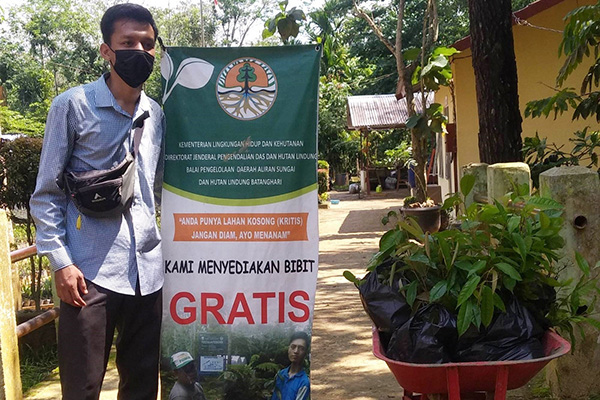Forests for People support our partner Frankfurt Zoological Society to run a Mobile Education Unit in the Bukit Tigapuluh Ecosystem in Sumatra to promote the importance of protecting this vital ecosystem for both humans and wildlife. The education team regularly visits local schools as well as farmers at the buffer zone of the Bukit Tigapuluh National Park to slowly build acceptance and support for conservation and alternative farming techniques. The team has set up an integrated environmental education program in elementary schools surrounding the Bukit Tigapuluh National Park. This has been embraced by both teachers and students.



Encroachment and destruction of the forest by local farmers threatens this biodiverse landscape and is not sustainable. Several small workshops and exhibitions are conducted by the Mobile Education team to introduce communities to environmentally friendly forestry practices including mixed tree cultures and low environmental impact agroforestry, with the long-term vision of developing a ‘Green Economy.’ The field training has a strong emphasis on mentoring to ensure a lasting impact. Mentors live within the communities for at least six months and engage constantly with local groups. They accompany local farmers daily to work alongside them and provide an introduction and initiation to environmentally friendly tree-based agroforestry techniques. Community nurseries are established in the participating villages to produce seedlings for environmentally friendly agroforestry and demonstration and training plots are also established for hands-on training.
There is an emphasis on diversified commodities to promote a traditional poly or permaculture as a natural protection against plant diseases and pests, and a safeguard against fluctuations in market prices. The ultimate value for conservation is a concentration of farming activities on a permanently cultured plot of one-hectare land, where up to five different commodities with reasonably high market value are produced to ensure that the financial needs of traditional forest communities can be met.